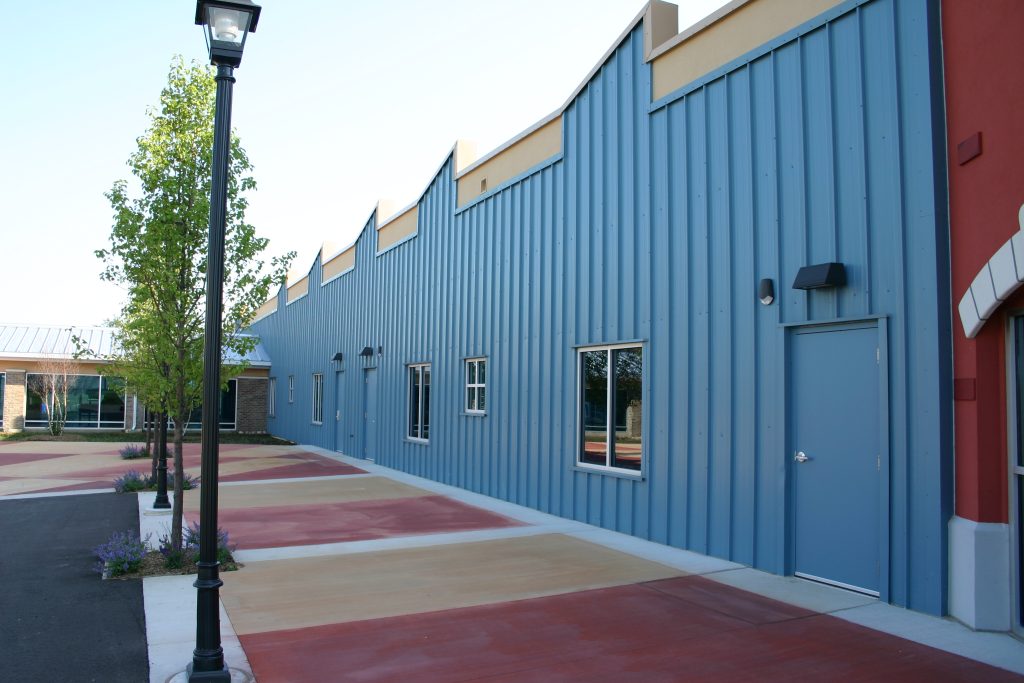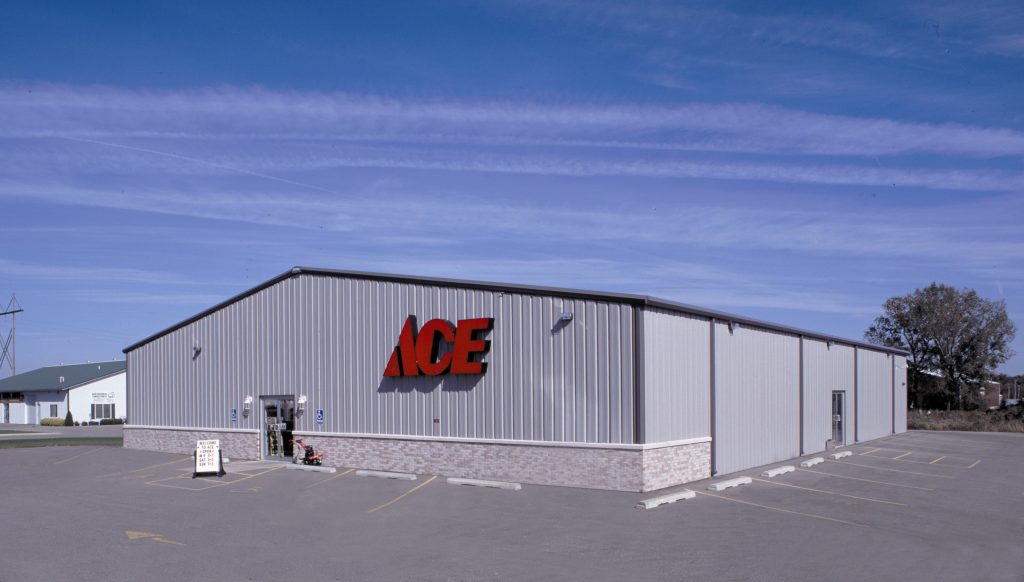Commercial property insurance costs can represent a significant portion of lifetime ownership expenses, so careful consideration matters. Construction decisions for warehouses, retail spaces, or office campuses can significantly impact insurance rates for decades. At Foremost Buildings in Jefferson, Wisconsin, we’ve built commercial metal buildings across the Midwest for over 30 years.
Steel buildings reduce insurance costs for commercial property owners by addressing key risk factors. They are fire-resistant, durable against extreme weather, and require minimal maintenance. Additionally, energy-efficient designs and compliance with local building codes further lower risk, leading to favorable insurance premiums and long-term cost savings.
How do Steel buildings reduce insurance costs?

Steel buildings address multiple risk factors underwriters consider when calculating commercial property premiums. Fire-resistant materials don’t contribute fuel to fires, weather-resistant construction withstands Midwest storms without deterioration, and precision-engineered structural systems reduce collapse risk.
Low-maintenance materials prevent deterioration claims, while fast construction reduces builder’s risk exposure. Energy-efficient designs lower operational costs, and regulatory compliance is built into every project to satisfy carrier requirements. These physical characteristics create a foundation for favorable insurance conversations.
Fire Resistance Properties
Steel doesn’t burn, a fundamental characteristic insurance underwriters recognize when assessing fire risk. Many carriers offer more favorable underwriting terms for metal construction. Unlike wood framing, steel structural components don’t fuel fires. Premium-grade metal maintains integrity at temperatures that cause wood to fail, providing more evacuation time and allowing fire suppression systems to work effectively.
Steel wall and roof panels resist ignition and flame spread, containing fires better than combustible materials. This is particularly important for buildings that house valuable inventory, equipment, or tenant improvements. Insurance carriers recognize these fire-resistant characteristics during the risk evaluation process. Your insurance broker can explain how this affects your specific coverage.
Weather and Storm Durability
Midwest weather tests every building. High winds, heavy snow loads, and severe storms create risks that insurance companies factor into premium calculations. Pre-engineered metal buildings are designed for extreme loads and built for harsh climates.
Corrosion-resistant steel panels shed water efficiently and resist the deterioration that leads to weather-related claims. Weather-proof construction maintains building envelope integrity through years of exposure, reducing the likelihood of wind or water damage claims.
Structural Design and Load Capacity
Commercial buildings must support roof loads, resist lateral forces, and maintain stability under demanding conditions. Precision-engineered steel components work together as a complete structural system. Clear-span interiors eliminate interior columns without compromising capacity, while flexible PEMB systems distribute loads efficiently across the frame.
Insurance underwriters evaluate the structural design when assessing the risk of collapse. Properly engineered metal buildings meet requirements for structural reliability, with buildings designed for cranes and heavy-duty industrial use demonstrating steel’s load capacity. Structural integrity matters throughout the building’s entire lifecycle, not just at installation.
Low Maintenance Requirements
Insurance claims often stem from deferred maintenance and deteriorating components. Wood rots, traditional materials degrade, and envelope failures cause interior damage. Metal buildings require minimal maintenance compared to conventional construction. Rust-resistant, corrosion-resistant panels withstand decades of exposure without the painting, sealing, or replacement cycles traditional materials demand.
This durability reduces maintenance-related failures that generate claims. Property owners who maintain their buildings properly benefit from stronger insurance relationships and more favorable renewal terms.
Integrated Risk Mitigation Features
Insurers favor buildings with features that reduce specific risks. Fire suppression systems, security measures, and proper drainage all influence underwriting decisions. Flexible layouts and customizable designs allow you to incorporate risk mitigation features during initial construction rather than retrofitting them later.
Scalable floor plans accommodate security systems, fire protection equipment, and building monitoring technology without structural compromises. Our design support from concept to completion includes working with you to understand your insurance requirements.
Energy Efficiency and Operational Stability
Energy-efficient design, including the use of insulated panels and efficient lighting, reduces utility costs and operational expenses. Buildings that cost less to operate create more financial stability for property owners, and insurers factor business stability into their risk assessments.
Insulated panels also provide climate control benefits that protect temperature-sensitive inventory or equipment, reducing the likelihood of environmental damage claims. Optional insulation for acoustics and climate serves multiple purposes beyond just comfort.
Code Compliance Built In
Insurers require buildings to meet local building codes and zoning regulations. Non-compliant structures face coverage restrictions or policy exclusions. Our in-house engineering team designs structures built to local and state codes across our entire service area.
Experience in non-standard permitting is invaluable when your project involves unique features or challenging regulatory environments. Insurance providers appreciate buildings designed and constructed with proper permits and inspections.
Conclusion
Every commercial property has unique insurance considerations based on occupancy, location, tenant requirements, and business operations. Steel construction addresses many of the physical risk factors insurance providers evaluate.
Contact us at (920) 674-6746 or email support@foremostbuildings.com to discuss your commercial building needs. Our team at Foremost Buildings, located at 895 N Parkway Street, Jefferson, WI 53549, works with property owners to design commercial steel buildings that meet operational needs and address long-term ownership considerations.
FAQs
Can you provide documentation that insurance carriers need during the underwriting process?
Yes. Our engineering team provides stamped drawings, engineering calculations, and building specifications that insurance providers typically request during the underwriting process. We can coordinate with your insurance agent or broker to provide the necessary documentation.
How does steel construction compare to concrete or wood for insurance purposes?
Each material has characteristics that insurance providers evaluate differently. Steel offers fire resistance, structural integrity, and durability advantages. Your insurance agent can explain how carriers in your market assess different types of construction.
Do you work across your full service area for commercial projects?
Yes. We design and construct commercial buildings across the Midwest, with a primary focus on Wisconsin and the surrounding states. Our erection services, provided through Sumit City Steel, offer professional installation that meets insurance carrier requirements for proper construction. Contact us to confirm service availability for your specific location.
What’s the first step in planning a commercial steel building?
Contact us for an initial consultation. We’ll discuss your project requirements, site conditions, timeline, and budget. Our estimators provide transparent estimates, and our design team works with you from concept to completion.

